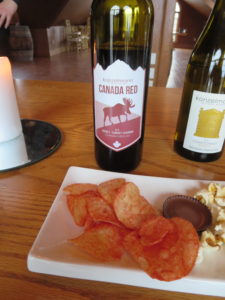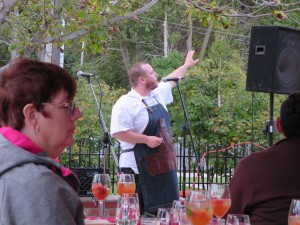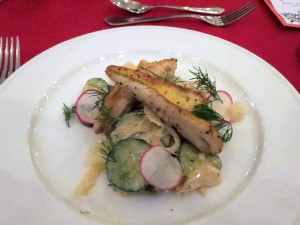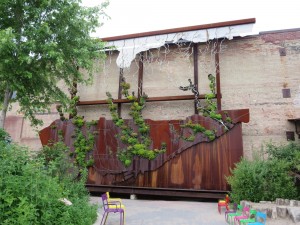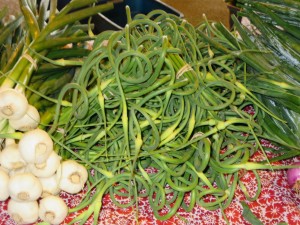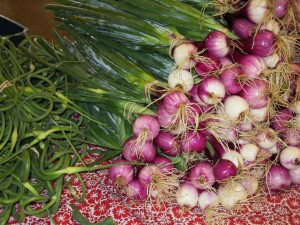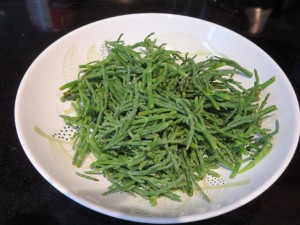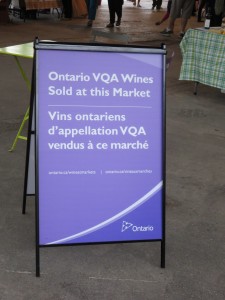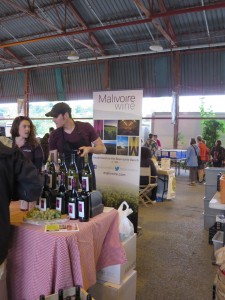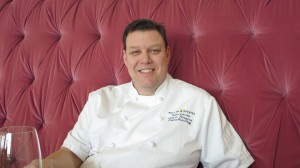The folks at Konzelmann Estate Winery invited me to visit during Days of Wine and Chocolate. Joanne, a friend from Hamilton, had never been to Konzelmann and she was happy to play hooky with me one Friday.
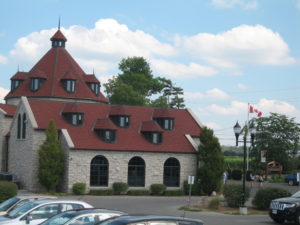 Because I’ve always found tutored tastings fun – and a great way to really experience a winery – I checked on-line to find out what activities Konzelmann offers. I was expecting to see the usual – a tasting flight perhaps with some cheese. I was tickled when I saw they have a Junk Food Pairing. It sounded fun, so I booked it.
Because I’ve always found tutored tastings fun – and a great way to really experience a winery – I checked on-line to find out what activities Konzelmann offers. I was expecting to see the usual – a tasting flight perhaps with some cheese. I was tickled when I saw they have a Junk Food Pairing. It sounded fun, so I booked it.
We didn’t know what to expect, especially given that one person’s junk food may be another person’s dietary staple!
The tasting was upstairs in a cozy, wood-panelled loft room. Ken Dubois, who led the tasting, ushered us to the table where the tasting was set up. At each place setting was a plate with four different junk foods: ketchup flavoured potato chips, Reese cups, kettle popcorn, and fuzzy peach candies.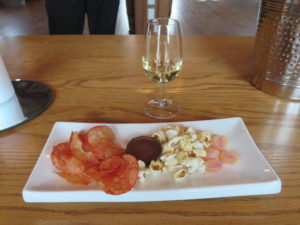
My first thought was, “well, I’d certainly agree – those are all junk food”. My next thought was “who would ever drink wine with Reese cups?” Fortunately, I was professional enough not to say that out loud…
Before we started, I asked Ken how they came up with the idea of a Junk Food Pairing tasting. He explained it all started as a bit of a game among winery staff. They’d bring in some food they like, or had on hand, and they’d have a competition to figure out what wine might pair best with it. Chips and popcorn – things you and I might serve with some wine – were too boring for some staff members.
Ken’s favourite was when someone brought in Fruit Loops. Given that Konzelmann produces over 30 different wines, I can imagine the challenge – and delight – of trying different combinations. They had so much fun with it, they decided to turn it into a proper tasting.
Here’s a short video of Ken talking about the genesis of this unique tasting.
Ken started us on a lightly oaked 2015 Chardonnay Reserve with the kettle corn. The light butteryness of the Chardonnay complimented the light sweetness of the kettle corn. Next, he poured us some of their 2015 Canada Red – it’s a Zweigelt/Cab blend. That was paired with the ketchup chips. For me, that was the first real Wow! The wine transformed the tangy vinegary flavour of the chips into something mildly sweet.
 Next up were the Reese cups. I confessed to Ken that Reese cups are a real weakness for me and so I try to only have them on rare occasions as a treat. So, to me, it seems a waste of good wine AND a waste of the pleasure of a Reese cup to have them together. But, of course, we were there to try something new…
Next up were the Reese cups. I confessed to Ken that Reese cups are a real weakness for me and so I try to only have them on rare occasions as a treat. So, to me, it seems a waste of good wine AND a waste of the pleasure of a Reese cup to have them together. But, of course, we were there to try something new…
Ken poured us their 2015 Pinot Noir (1) and invited us to try the Reese cup with it. The effect was quite unbelievable. Seeing that I was struggling to describe the taste, Ken smiled and said, “Kinda like a peanut butter and jelly sandwich, isn’t it.” That was EXACTLY it! Quite amazing.
The last pairing was the fuzzy peach candy and their 2015 Peach Wine. That was my least favourite pair because I don’t really like that kind of candy. I’ve had Konzelmann’s Peach Wine before and it’s lovely – I’d pass on the candy and just enjoy the wine.
I knew the tasting would be fun and I expected it would demonstrate how a wine can complement a food – like the Chardonnay/kettle corn pairing did. What made the tasting especially interesting, however, was the chance to experience how wine can actually transform the taste of a food, creating a whole new taste sensation.
I left the winery with a bottle of the Canada Red and the Pinot Noir (1), determined to recreate the unique pairings with some friends.
Click here to see a short video of Ken describing the idea behind the Junk Food Pairing.
